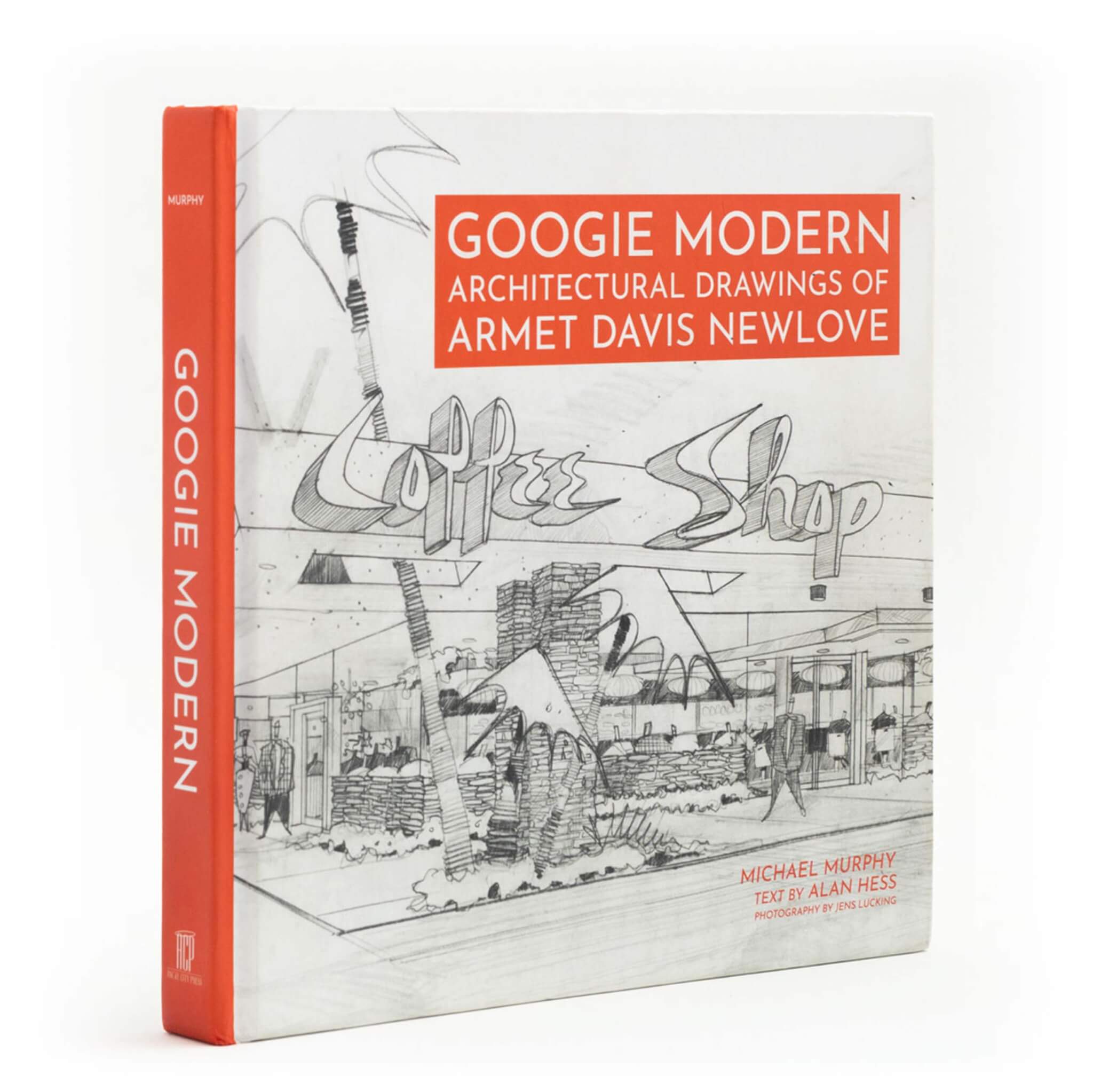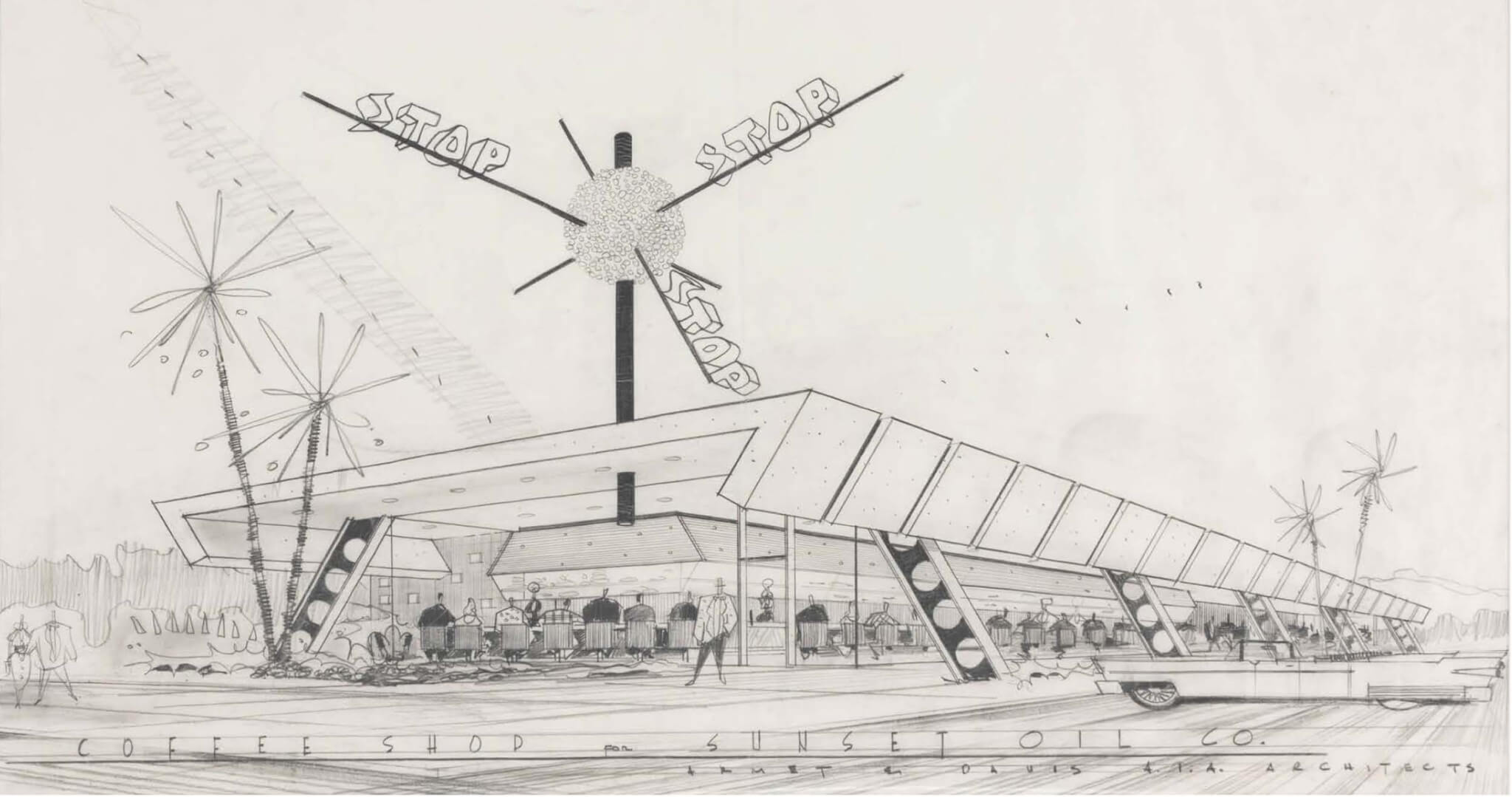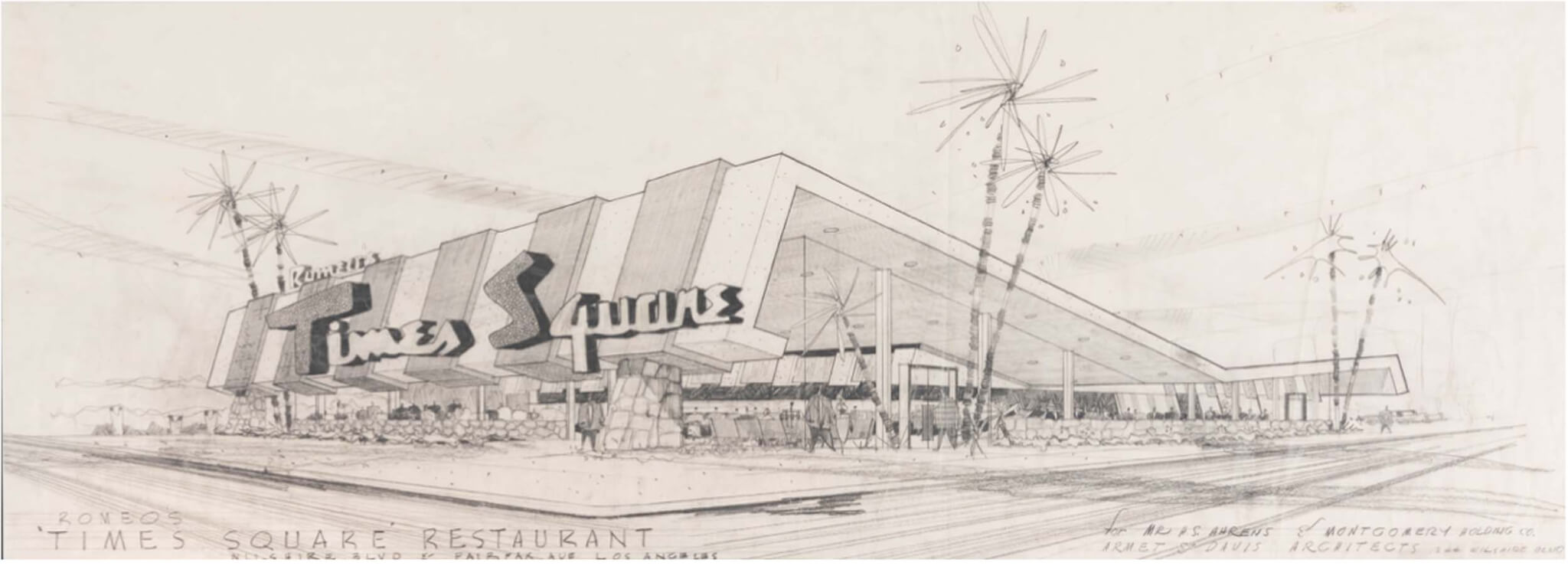Googie Modern: Architectural Drawings of Armet Davis Newlove | By Michael Murphy, with text by Alan Hess | Angel City Press | $50
Cruise down the Strip, and you can’t miss them. Jitterbug profiles, bright candy outlines, a sea of lowered coupes and leaded noses surrounding them—Googies! Insouciant, perky things that they were, Googies, much like a band serving up perfectly tuned harmonies but not landing at the top of the charts, were never in absolute sync with the times. They never quite found a champion with enough juice to get them a spot on the hit parade. They were, to the gatekeepers and apologists of the midcentury architecture world, all too light, too frivolous, too (in a word) “pop” to be taken seriously.
That’s tragic. Because although their pedigree was more mongrel than purebred, a fact that prevented the style (derived from John Lautner’s design for an eponymous coffee shop) from being applied to the design of museums or concert halls, Googies elicited an undeniable bravado. Theirs was an instant appeal of the bright logos and roofscapes that came to be an instant lure to drivers zooming down SoCal’s strips. Together with coordinated uniforms and strawberry shakes, they blended seamlessly with California’s growing car culture, becoming an afternoon destination for Model As and supercharged jalopies on the way home after school.


From the vantage point of today’s architectural avant-garde, the Googie style can seem prescient, but look as one might, there is simply no connective tissue. During the 1950s and ’60s, the West Coast, birthplace of John Entenza’s Case Study program and its progenitor Arts & Architecture, was not at the table in the august halls of Princeton and New Haven, let alone Oxford. It had its heyday later, but by the 1970s, Brutalism was having its last hurrah while Venturi and Scott Brown’s Learning from Las Vegas achieved only a patronizing nod. In those years, Stirling was all the rage, and the pompous, regal reign of postmodernity waited in the wings. By 1980, pomo was a full go.
Googies are genuine outliers to this neat timeline of American architectural history. They might as well have been in a time bubble which is only now beginning to burst. The swooping roof lines and faceted facades that were the hallmark of the Googie-ism are increasingly adopted by premium developments, while the relentless grids of commercial structures shook, twisted, and shimmied under deconstructivism. Far from the principles of modernism that Googies teasingly discarded (to great popular effect), today’s corporate icons have renounced the discipline, but not the hardware, never straying far from their Wall Street roots of franchised operations.


That, of course, misses the point. The exuberance of the Googie ethos was more lifestyle than style alone: at drive-ins, waiters on roller skates delivered shakes and fries on trays slung like saddle bags over the doors of diner’s cars while the voice of Chubby Checker mingled with the exhaust note of T-rods. (American Graffiti, anyone?) In a rare mingling of form and function that would have scandalized the mandarins at the Museum of Modern Art, Googie architecture inspired—no, gave permission for—teens to be teens.
If it is possible to capture that spirit, Michael Murphy has come awfully close with the publication of Googie Modern: Architectural Drawings of Armet Davis Newlove. Having been granted access to the Los Angeles firm’s archive consisting of pencil sketches and presentation drawings, often on fragile foolscap, Murphy built a special, on-site studio in order to manage the photography of the work. With a text by Alan Hess that strays just far enough from design lingo to entertain while still informing, and drawings in every-which-way perspectives, the book gives an eye-opening account of the hundreds of projects that clung to highways across the country. Often designed with multiple sites in mind, the projects emphasize dynamic form, supple typography, and visionary interiors, aspects that are brilliantly conveyed by the sweeping hand-drawn images on display. Redolent of Picasso, Arp, and Ponti, with notes of Harley Earl and Pininfarina, the forms vibrate with the intensity of a Herbert Matter cover design.


Armet & Davis’ swaggering architectural translation is a thing of wonder. But there is also rigor to the drawings, down to the pies in the stainless-steel vitrines. There was more: The forced perspective, angular planes, and not-quite-clashing geometry seem like proto-Hadid brainstorms yet are refreshingly free of pretension. These are drawings that should appear on every student’s taboret. Each one is a thesis on how to achieve dynamic, built form without resorting to the ministrations of Rhino and high-tech materials. Each one a reminder that even with limited budgets, vision can rise above means to produce a vocabulary of buildable forms. This book documents designs that rapidly populated America’s highways. They remain firmly fixed in the collective memory of a time when optimism and creative energy flourished across the land.
Craig Hodgetts is a cofounder of hplusf design lab.











